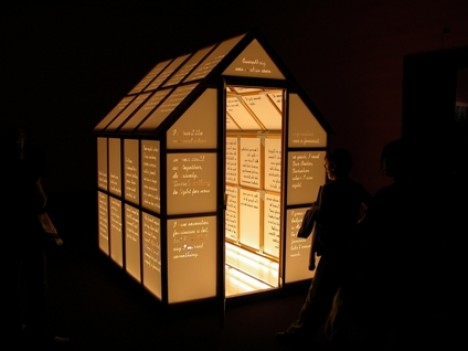In this seminar we discussed the exhibitions at the Whitworth Gallery in Manchester.
One piece of artwork we looked at was Nathan Coley's "Gathering of Strangers".
 |
| Add caption |
After thinking about how the work could be interpreted (it could describe the condition of the gallery situation - how strangers gather at the gallery to look at the work) we looked at how the context changes the interpretation of the words, and the link to Christian congregations - the places where Nathan Coley's "Gathering of Strangers" sign becoming 'camouflage churches'. We also considered how the social context shifts the meaning.
Another piece of work we looked at was "Myselves" by Do Ho Suh. This piece of work was made of thread 'drawings' embedded within the paper, which gave an interesting effect:

The next artworks we discussed was "Rainbow Girls" by Ghada Amer, which addresses issues around gender. Amer purposefully adopts embroidery as the medium for the creation of the work to subvert gender roles/stereotypes. There are links to Islamic culture in the work and also phrases borrowed from feminist text.
Another work that also borrows from feminist text was an installation piece of work by Mary Kelly, an illuminated greenhouse with walls inscribed with feminist messages.










